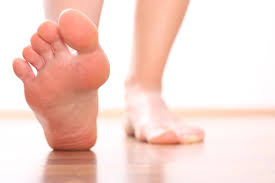2020-09-02

Most humans demonstrably favor one limb over the other. Most research on limb preferences has been dedicated on handedness and its genetic foundation as well as its association with for example psychiatric disorders or language lateralization. However, humans also usually prefer one foot over the other. In this large-scale meta-analysis featuring over 145000 individuals, a multinational team from Germany, Greece and the UK aimed to conclusively determine (1) the prevalence of left- and right-footedness in the population, (2) the relationship between footedness and handedness and identify (3) moderating factors on footedness such as psychiatric disorders, being an experienced athlete and the individuals’s sex or age. We found that the prevalence of left footedness was 12.10% in the population. 60.1% of left‑handers were left‑footed, but only 3.2% of right‑handers were left ‑footed indicating a strong association between handedness and footedness. Furthermore, all above-mentioned moderators had a significant impact on the prevalence of footedness indicating that footedness is determined by both a nature and a nurture component. We hope that this study inspires more research on footedness as this phenotype has been critically understudied in laterality research.

Most humans demonstrably favor one limb over the other. Most research on limb preferences has been dedicated on handedness and its genetic foundation as well as its association with for example psychiatric disorders or language lateralization. However, humans also usually prefer one foot over the other. In this large-scale meta-analysis featuring over 145000 individuals, a multinational team from Germany, Greece and the UK aimed to conclusively determine (1) the prevalence of left- and right-footedness in the population, (2) the relationship between footedness and handedness and identify (3) moderating factors on footedness such as psychiatric disorders, being an experienced athlete and the individuals’s sex or age. We found that the prevalence of left footedness was 12.10% in the population. 60.1% of left‑handers were left‑footed, but only 3.2% of right‑handers were left ‑footed indicating a strong association between handedness and footedness. Furthermore, all above-mentioned moderators had a significant impact on the prevalence of footedness indicating that footedness is determined by both a nature and a nurture component. We hope that this study inspires more research on footedness as this phenotype has been critically understudied in laterality research.